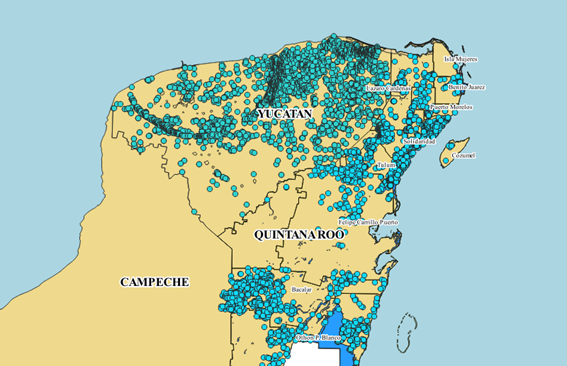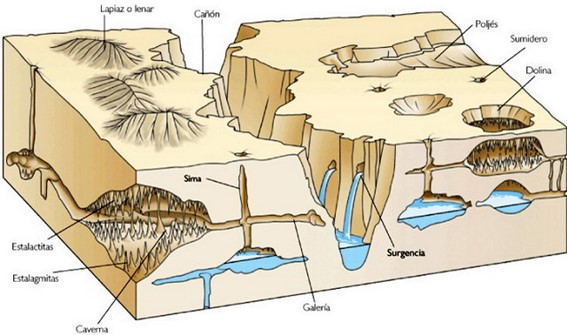2021 was declared the International Year of Caves and Karst. Although the karstic systems are well known by the people, they might not know what is the Karst and how these landscapes are formed.
Since I am based in Yucatán, writing about the karst is a must. The Yucatan Peninsula is composed almost entirely of rocks that are affected by karstic processes. It is probable we do not link cenotes to karst; but that is what they are; karstifications of the ground.

Thus, the ground is not made of karst; but the karstification is a series of processes in which the limestone rocks and dolomites erode and dissolve; forming these peculiar landscapes. The rock dissolution is defined by climatic elements, such as temperature and precipitation. The types of vegetation and its state of conservation contribute to the ground having different degrees of dissolution.
The Mexican Association for Studies on Karst points that it is fundamental to acknowledge the diversity of ground in the karstic areas, to protect the underground water sources. It is crucial to understand the karst to achieve a more efficient management of the ground, updated agricultural practices, adequate waste management from farms, and better urban and touristic planning.
Also, the strategic development plans from municipalities and states related to agriculture, forestry, farming, tourism, ecology, and environmental protection must consider karst in every decision made. The karstification make the ground fragile and prone to fractures and collapses; besides, porosity of the limestone rock is a conduct for any contaminant source.

The karstic dissolution of the rock is caused by the carbon dioxide present in rainwater. This dissolution creates calcium bicarbonate, a very soluble compound; so, rainwater filtering through cracks in rocks dissolve them and create caves, caverns, sinkholes and even underground river systems.
Nowadays, karstic formations in the Yucatán Peninsula are considered tourist attractions. Since the dawn of human civilization in this area, they have been and continue to be the only reservoirs of fresh water in the entire region. Preserving the underground and invisible river systems crossing the peninsula is an obligation to all the dwellers of the three states that comprise this region.
The karstification occurs in three stages. At first, the dissolution is present on the superficial level. Then, the caverns are formed and some inundate, forming the underground streams. Finally, the upper crust collapses and form the sinkholes, visible from the surface.

The fragility of the Yucatan ground, and the peculiarity that all the drinking water runs underground makes this region’s development unique, and must be addressed with its own standards, and a massified development is hazardous.
As representatives of the touristic industry, we must protect the natural wealth that the karst represents for the very successful Yucatan Peninsula, specially for Quintana Roo, where karstic processes are exploited touristically in a massive scale. There is a saying: You would not protect what you don´t know; so, in the following entries we will keep exploring the link between tourism and karst.
We invite you to share in the comment section which karstic formation has been your favorite during a tourist excursion.
References:
Candela, L. (2015) Acuíferos kársticos. Universidad Politécnica de Catalunya, UPC, Barcelona, España. Recuperado de:
Hernández Vergara (s/f) La Geología y el Karst en México. Asociación Mexicana de Estudios sobre el Karst. Recuperado de:
Monroy-Ríos E (2016) ¿Cómo se formaron cuevas y cenotes? Espeleogénesis. Environmental Biogeochemistry – Blog personal. Publicado el 20 de mayo, 2016. Fecha de consulta: [31/03/2021]. Recuperado de:
https://sites.northwestern.edu/monroyrios/2016/05/20/espeleogenesis/









